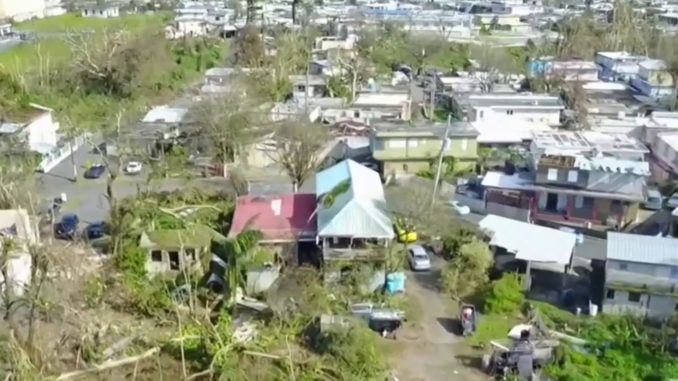
A recent report has revealed the real cost of human life of Hurricane Maria’s fatal sweep through Puerto Rico last September. As we approach the anniversary and find out that almost 3,000 people lost their lives, is it time to reappraise President Trump’s insistence that we did a “fantastic job?”
According to the official tally at the time, only 64 people died that fateful day, yet it turns out that those figures did not include the full account of the many different impacts that the storm had on the island and surrounding areas. George Washington University Milken Institute School of Public Health conducted the study and found that the devastating effects on water, communications, electricity and medical care appeared to have matched – or even exceeded – the death count of the most deadly storms to ever hit the USA. Some experts posit it as the most deadly storm in the country since 1900.
The problems have been manifold, and aid agencies and private individuals such as Kirk Chewning of Cane Bay Cares have been working hard, volunteering, contributing and raising money for the dispossessed in places like Puerto Rico and St. Croix. And while things are slowly on the mend, the reality is that Maria knocked down 80% of Puerto Rico’s utility poles and transmission lines, meaning almost everyone on the island lost power in the aftermath. And half of all households were still without power by the turn of this year.
It wasn’t until the middle of August this year that all customers finally got their power back, with PREPRA – the now bankrupt utility company – releasing a statement that announced 100% restoration – a mere 328 days since the category four storm decimated the grid. FEMA – the Federal Emergency Management Agency – called the occasion an ‘important milestone,’ but also pointed out there is a lot more rebuilding work to do before any talk of a full recovery can be claimed.
Regardless of the physical damage caused to Puerto Rico and the surrounding areas, there is has also been an enormous emotional cost. Unsurprisingly, the massive disaster has taken its toll in a variety of ways, and trauma is rife. Counseling sessions – run by the Ford Fund – are operating seven days a week and there are plans for expanding the service further.
Recovery is underway, of course, but with over $100 billion in damage, the storms have created a challenging environment, especially in a place that is still trying to get back on its feet after the Great Recession. There is no denying local authorities haven’t showered themselves in glory in their efforts – even the governor, Ricardo Rossello says that things could have been handled differently. But perhaps POTUS may need to think again. In President Trump’s mind criticism of the government’s federal relief efforts are wide of the mark, and he puts the blame solely on the island government. However, in a country that has just given away trillions in tax breaks to the already wealthy, there is a feeling that more money from the federal coffers could be released.


Be the first to comment